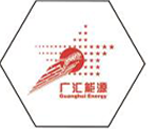
8 月 . 19, 2024 16:12
Back to list
Natural Gas Pressure Regulation Facility for Safe and Efficient Distribution
Understanding Natural Gas Pressure Reducing Stations
Natural gas plays a crucial role in the global energy landscape, serving as a primary source of heating, electricity generation, and industrial processes. However, the distribution of natural gas must be carefully managed to ensure safety and efficiency. One critical component of the natural gas supply chain is the pressure reducing station (PRS). This article explores the function, importance, and operational principles of natural gas pressure reducing stations.
Function of Pressure Reducing Stations
Pressure reducing stations are facilities that regulate the pressure of natural gas as it moves from high-pressure transmission pipelines to lower-pressure distribution networks. High-pressure gas is essential for transporting large volumes over long distances, yet it poses safety risks if delivered directly to end-users, such as residential homes or small businesses. PRSs reduce the gas pressure to a safe and manageable level, ensuring a steady and reliable supply to consumers.
The main function of a PRS is to control the pressure of the gas through a series of valves and regulators. These components work together to step down the high-pressure gas to a much lower pressure suitable for use in homes and industries. In doing so, PRSs also monitor and measure the flow and pressure of the gas, ensuring that it complies with safety standards.
Importance of Pressure Reducing Stations
The significance of pressure reducing stations cannot be overstated. First and foremost, they enhance safety by preventing potential hazards associated with high-pressure gas. In the case of a pipeline leak, high-pressure gas can ignite, leading to explosions and serious accidents. By reducing gas pressure before it reaches consumers, PRSs mitigate these risks effectively.
Moreover, PRSs contribute to the efficiency of the gas distribution system. By maintaining an optimal pressure level, they ensure that consumers receive a consistent supply of gas, which is vital for heating, cooking, and running appliances. Any fluctuation in pressure can lead to inefficient combustion in gas appliances, causing increased energy consumption and higher utility bills.
natural gas pressure reducing station

Additionally, PRSs play a role in maintaining the integrity of the pipeline infrastructure. High-pressure gas can cause wear and tear on pipelines, leading to costly repairs and maintenance. By regulating pressure, PRSs help extend the lifespan of the entire gas distribution system.
Operational Principles
The operation of a pressure reducing station involves several key components. The primary element is the pressure regulator, which automatically adjusts the gas flow based on the pressure difference between the incoming high-pressure gas and the outgoing lower-pressure gas. Depending on the design, these regulators can be pilot-operated or direct-operated.
Pilot-operated regulators utilize a small, secondary regulator to control a larger main regulator, providing a more stable output pressure. Direct-operated regulators, on the other hand, rely on a spring mechanism that opens and closes based on the pressure in the system. Both types are crucial in ensuring that the pressure remains within specified limits.
In addition to regulators, PRSs often incorporate other components such as filter assemblies to remove impurities from the gas, and relief valves to vent excess pressure safely. These features are essential for maintaining the overall safety and reliability of the gas supply.
Conclusion
Natural gas pressure reducing stations are vital infrastructure elements that ensure the safe and efficient delivery of gas to end-users. By carefully controlling the pressure of gas as it transitions from the high-pressure transmission system to the lower-pressure distribution network, PRSs provide not only safety benefits but also enhance the efficiency and longevity of the entire gas distribution system. As the demand for natural gas continues to grow, especially in the context of renewable energy transitions, the role of pressure reducing stations will remain crucial in supporting a reliable and sustainable energy supply.
Latest news
-
Unlocking The Quality Gas Pressure ReducersNewsNov.01,2024
-
The Role of Gas Pressure Reducing StationsNewsNov.01,2024
-
The Importance and Functionality of Safety Relief ValvesNewsNov.01,2024
-
The Essential Role of Safety Valves in Natural Gas ApplicationsNewsNov.01,2024
-
The Essential Role of Gas Pressure RegulatorsNewsNov.01,2024
-
Enhance Your Premium Gas FiltersNewsNov.01,2024

